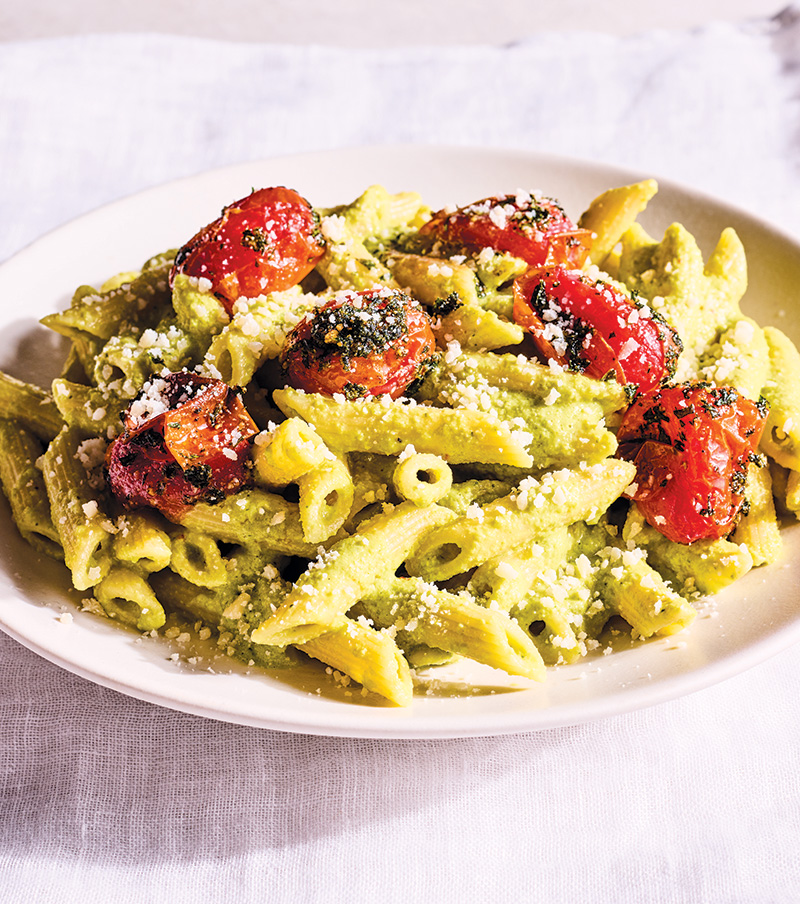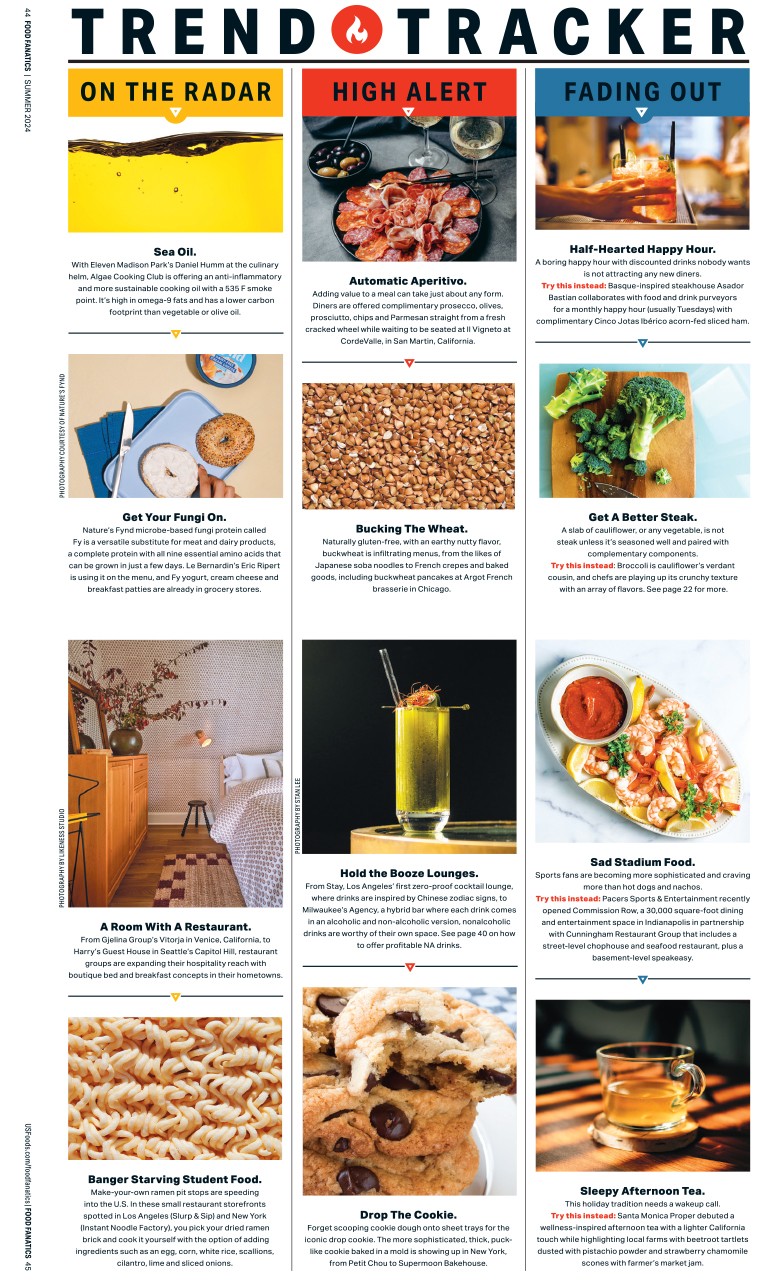How Chefs Are Changing the Narrative Around Hospital Food
Standout hospital food is real – and everyone can learn from it
Bruno Tison started his culinary career at a Michelin-starred establishment in France before becoming the youngest executive chef in the history of New York City’s famed Plaza Hotel.
After a career in high-end restaurants and hotels, he pivoted to an area of foodservice that’s largely the butt of jokes. In 2017, Tison became the executive chef of Northwell Health, the largest health system in New York.

“It was a long journey, as you can imagine,” Tison, vice president of Northwell’s food services, says. “Most healthcare systems in the United States do not consider food and nutrition as an asset. They look at it as a cost, almost an obligation.”
Tison decided to reimagine hospital food as a successful restaurant, with meals made by skilled workers, using quality ingredients and focusing on food as a key factor in emotional and physical wellness.
He’s among an increasingly vocal crew of chefs, many with restaurant and hotel backgrounds, working for healthcare systems around the country to transform hospital food into more than a punchline. They might even have tips to share with restaurant chefs.
Meals Served with Care
“We’re bringing the hospitality industry into the hospital,” Tison says. “I do not treat it differently than I would my restaurant.” That means using small, local producers, including for organic coffee and bread, and focusing on order accuracy. When he started, Tison says, the hospitals didn’t serve pork because there were concerns about serving it accidentally to someone whose religion forbade the protein. “We needed to correct our ordering process and not make mistakes,” he says. Too often, patients would complain about cold food, late meals and incorrect orders. “This is what we needed to fix.”

Stop Relying on the Freezer
When Tison joined Northwell, freezers made up 90% of the refrigerated space in the kitchens. Now, they’ve almost all been converted to refrigerators for storing fresh produce and other ingredients. “Our freezer is almost empty,” he says. Stock, soup and other housemade items are the only ingredients stored in the freezer.
Save Room for Treats
Even (and maybe especially) folks who are hospitalized deserve a tasty post-meal treat. At one time, Northwell served only prepackaged, frozen and not-nutritionally sound desserts. Tison started collaborating with a local pastry shop to develop desserts that fit within the nutritional guidelines for patients. About a year ago, he hired Northwell’s first pastry chef to create desserts in-house. “We put beautiful small desserts on the tray of every patient who’s not on a restricted diet,” Tison says.
Educate Your Diners
Earlier this year, Emory Healthcare embarked on a month-long test of a plant-based menu at one of its hospital cafés. Items included vegan nachos and chickpea cauliflower masala. Diners would scan a QR code to learn more about what they were eating, as well as find resources on plant-based eating and take a survey about their meal. “We had a blog that also has some good education, with lots of quotes from our physician partners as well,” says Kip Hardy, manager of Food Service Projects at Emory Healthcare in Decatur, Georgia. “We have changed a lot. I mean, the idea of a plant-based menu in our café even five years ago – oh my gosh, we’re going to get the torches and pitchforks!”
Find Like-Minded Partners
Emory Healthcare has worked with Common Market, which sources produce from local farmers, for years, says Mike Bacha, Emory’s assistant director of culinary. “We purchase local lettuce from a hydroponic farm in South Georgia. I buy the chopped collard greens, apples, blueberries, you name it, whatever is in season. Some things are still priced a little bit out of our range, but, over the years, I’ve been able to work a lot of good partnerships and get to know some of the farmers.” Unlike restaurants, where business fluctuates, hospital volumes don’t change much. That helps Bacha make buying commitments to area produce suppliers, he says.

Get Creative with Flavor
Phil DeMaiolo, executive chef for inpatient meals with NYC Health+Hospitals, came to hospital foodservice in 2020 after a career in hotel dining. To DeMaiolo, hospital food can still be flavorful while following necessary nutritional guidelines – you just have to get creative. “We really looked at cooking processes, flavoring profiles and cooking methods that bring more flavor to the dish. A lot of natural ingredients contain sodium, so you don’t necessarily have to season everything with salt. But you can use things like herbs, aromatics.”
Know Your Audience
Hospital food, like food served in restaurants, must be rooted in the people it serves. You wouldn’t open a high-end steakhouse in a community that couldn’t support it, DeMaiolo says. “In a hospital, you have to know who you’re feeding, what the cultures are and really focus on the comfort food of those cultures,” he says. “Sometimes, we tend to create dishes that we feel are right for us. It’s not about us. It’s about our clients, our patients. It’s about the people that we serve. Train your staff to understand why we’re doing this and incorporate them into the decision-making because, normally, your staff lives in the community, they are part of the culture.”
For Northwell’s Tison, his revamped foodservice program has hit just one major snag: “Now, the problem is that people do not want to leave,” he says. “They ask, ‘At what time is lunch served? I’m going to be released at 11:30.’ But we can do lunch or dinner to go so we can free the bed.”



